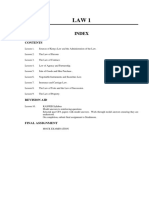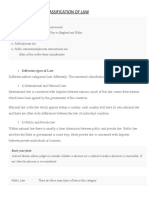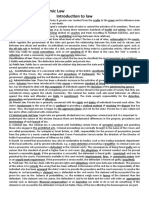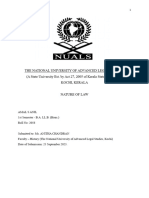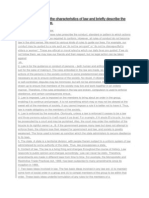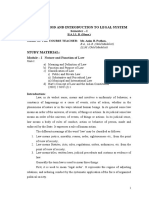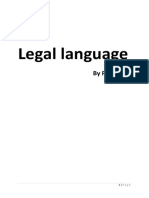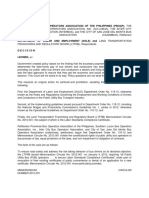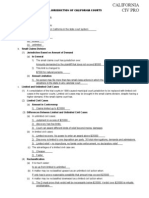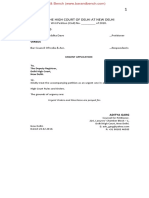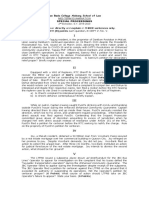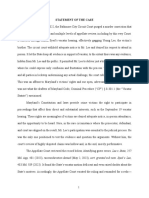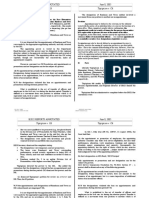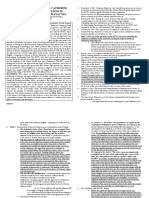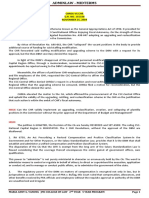0% found this document useful (0 votes)
63 views6 pagesIntroduction To Law
This document provides an introduction and overview of law. It defines law as "a set of rules that guide human conduct and affairs, and formal sanctions when those rules are violated." The document distinguishes law from morality, noting that while some moral rules are enforced legally, not all immoral acts are illegal. It also outlines the nature and functions of law, including setting standards of justice, ordering society, and resolving conflicts. The document concludes by classifying different types of law and outlining the sources of law in Kenya, including the constitution, acts of parliament, common law, equity, and statutes from England.
Uploaded by
Dj I amCopyright
© © All Rights Reserved
We take content rights seriously. If you suspect this is your content, claim it here.
Available Formats
Download as DOC, PDF, TXT or read online on Scribd
0% found this document useful (0 votes)
63 views6 pagesIntroduction To Law
This document provides an introduction and overview of law. It defines law as "a set of rules that guide human conduct and affairs, and formal sanctions when those rules are violated." The document distinguishes law from morality, noting that while some moral rules are enforced legally, not all immoral acts are illegal. It also outlines the nature and functions of law, including setting standards of justice, ordering society, and resolving conflicts. The document concludes by classifying different types of law and outlining the sources of law in Kenya, including the constitution, acts of parliament, common law, equity, and statutes from England.
Uploaded by
Dj I amCopyright
© © All Rights Reserved
We take content rights seriously. If you suspect this is your content, claim it here.
Available Formats
Download as DOC, PDF, TXT or read online on Scribd
/ 6









